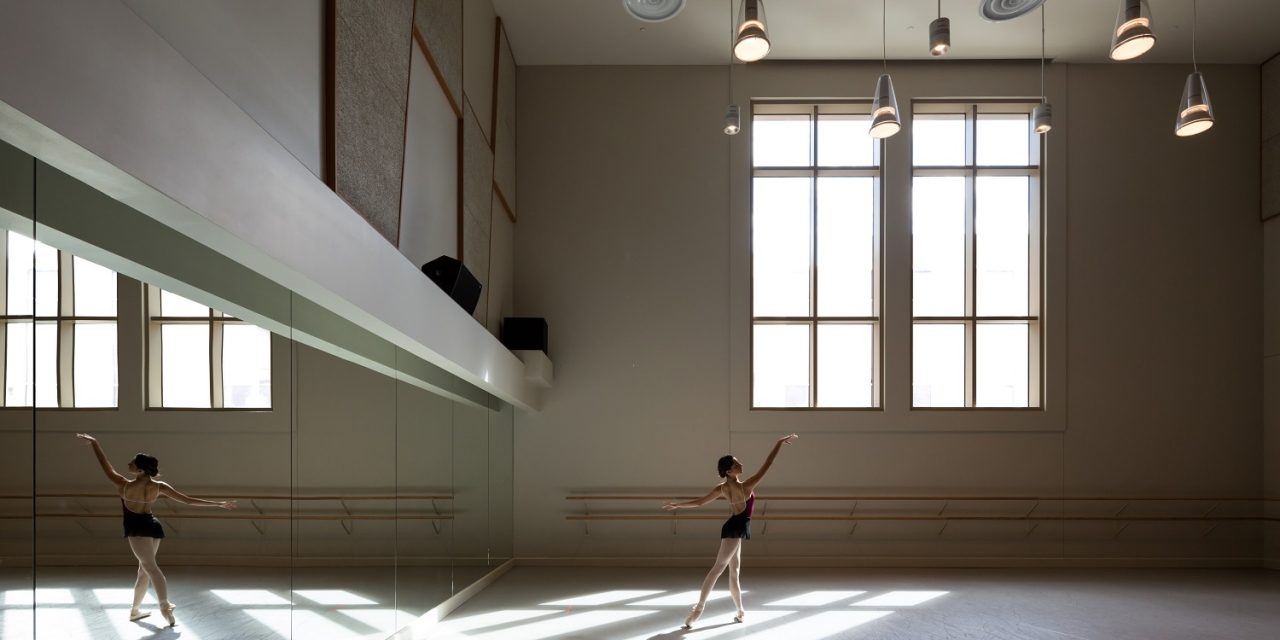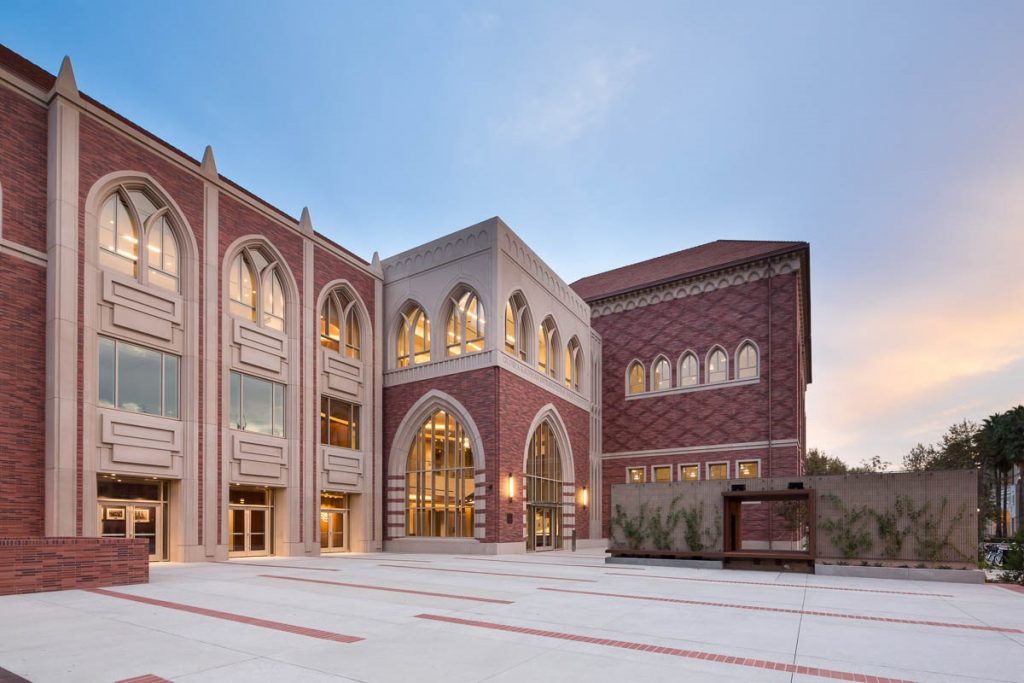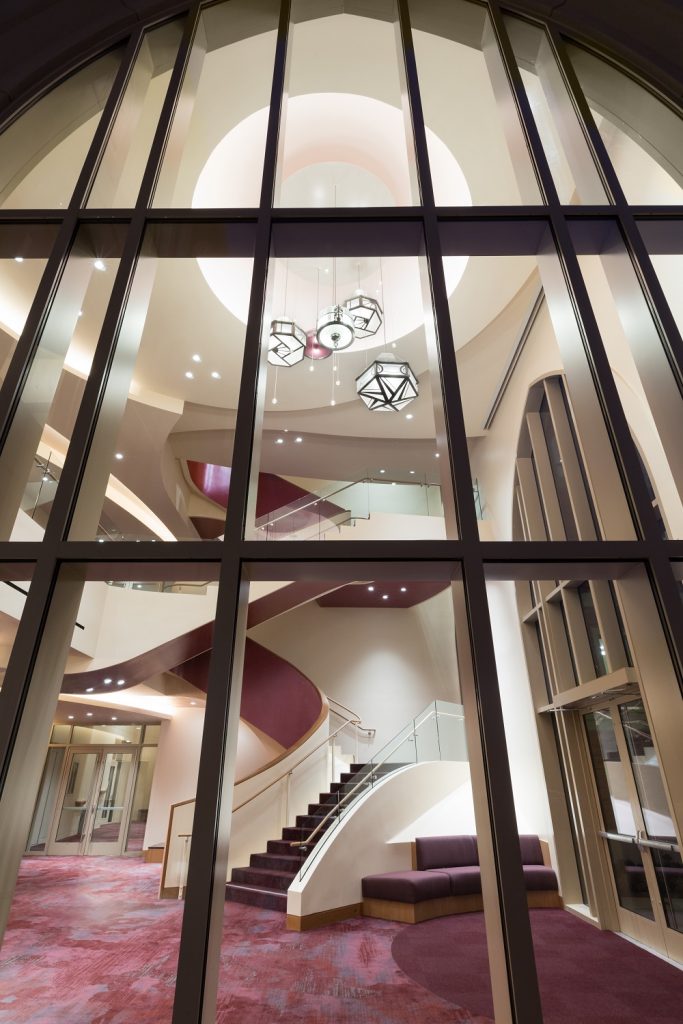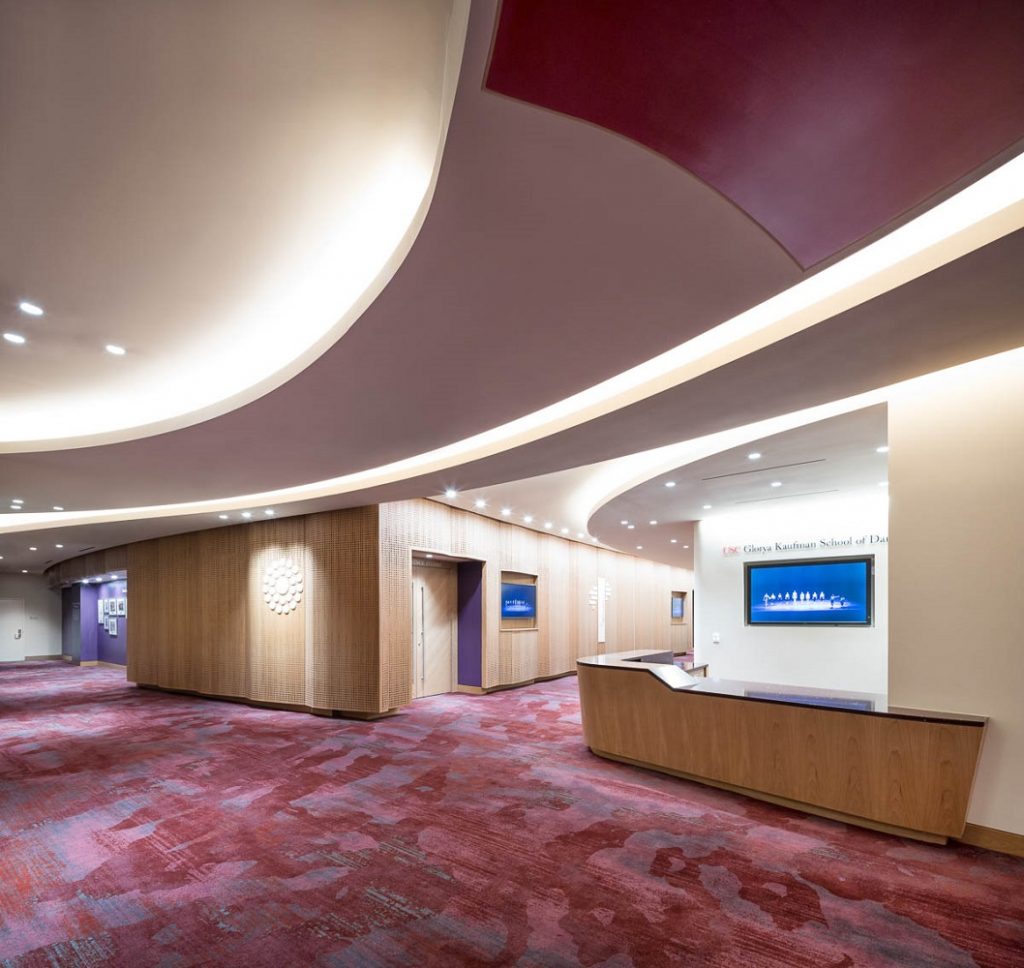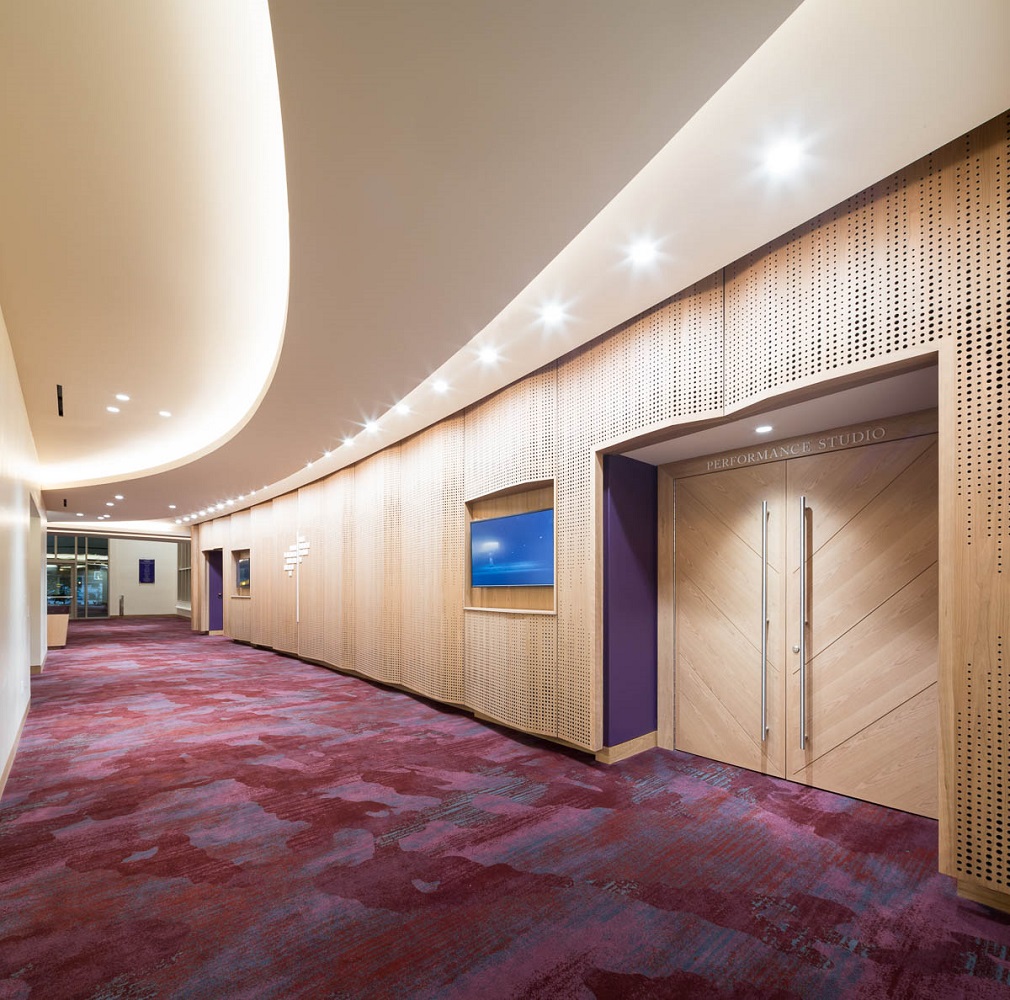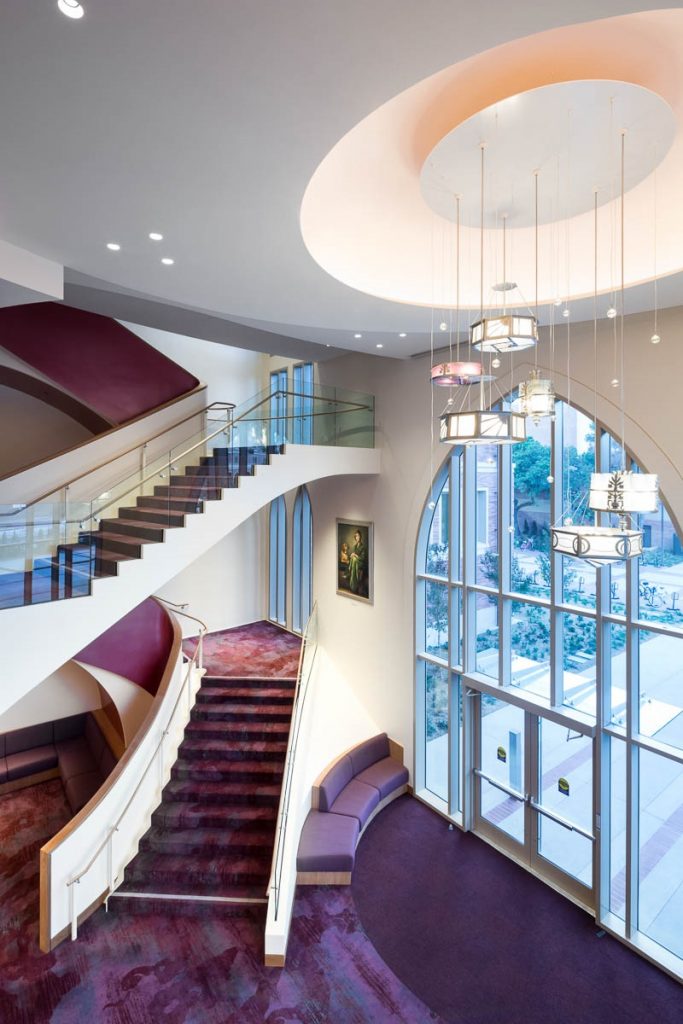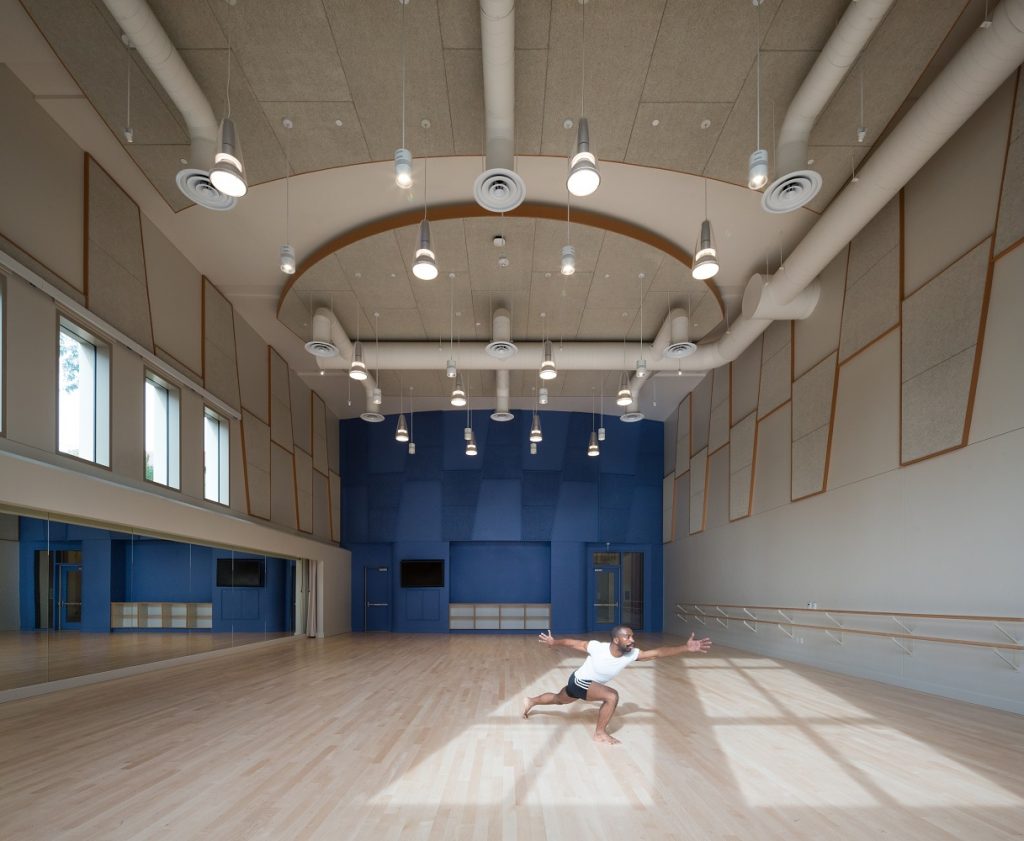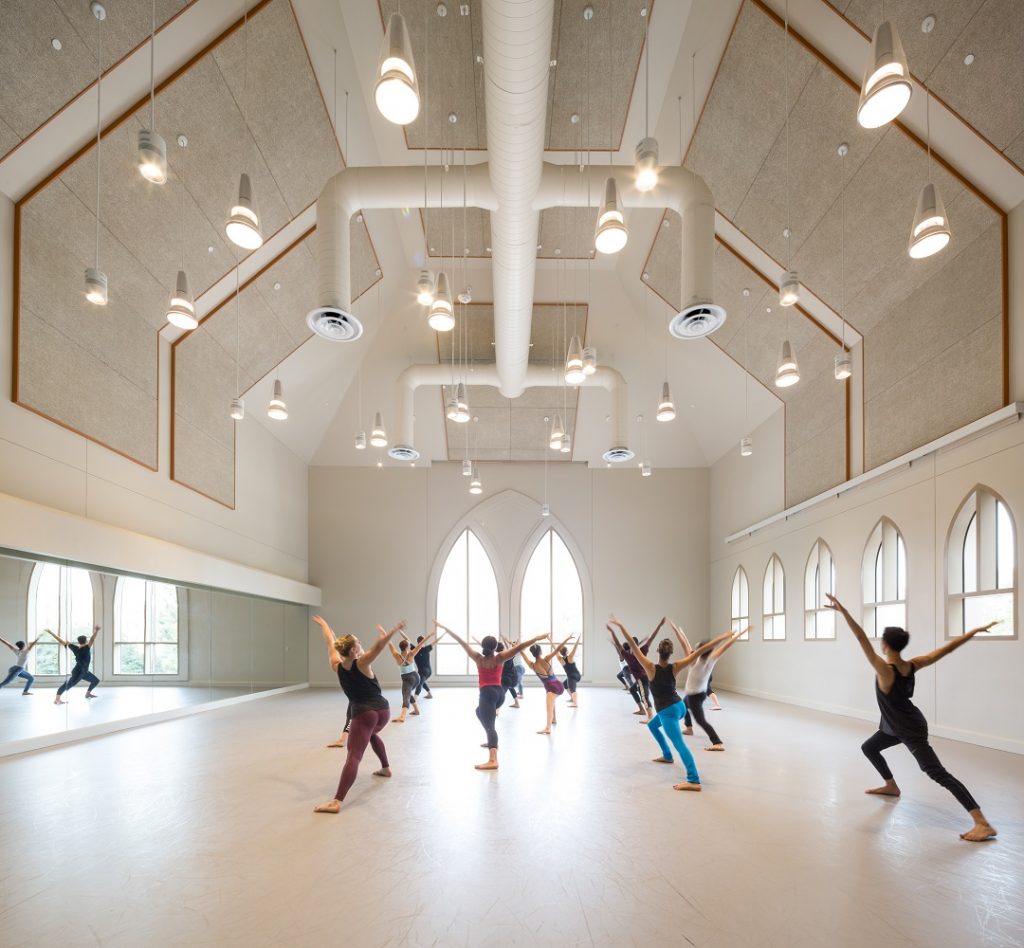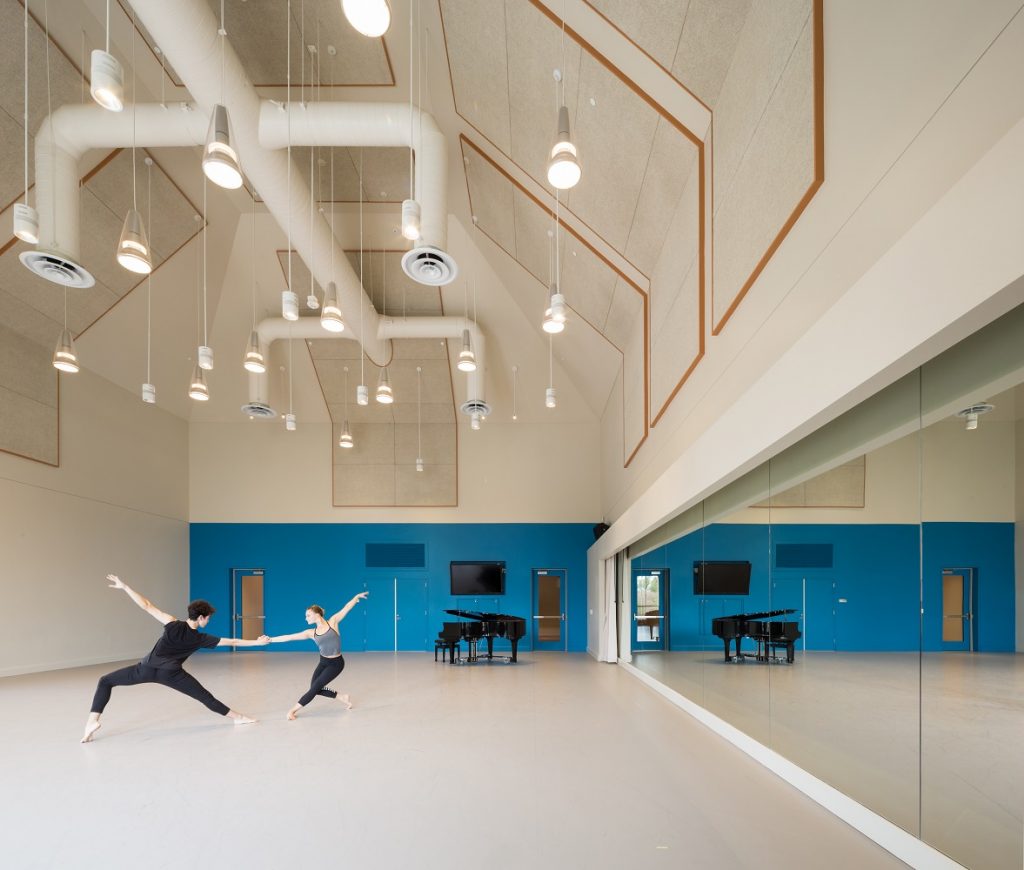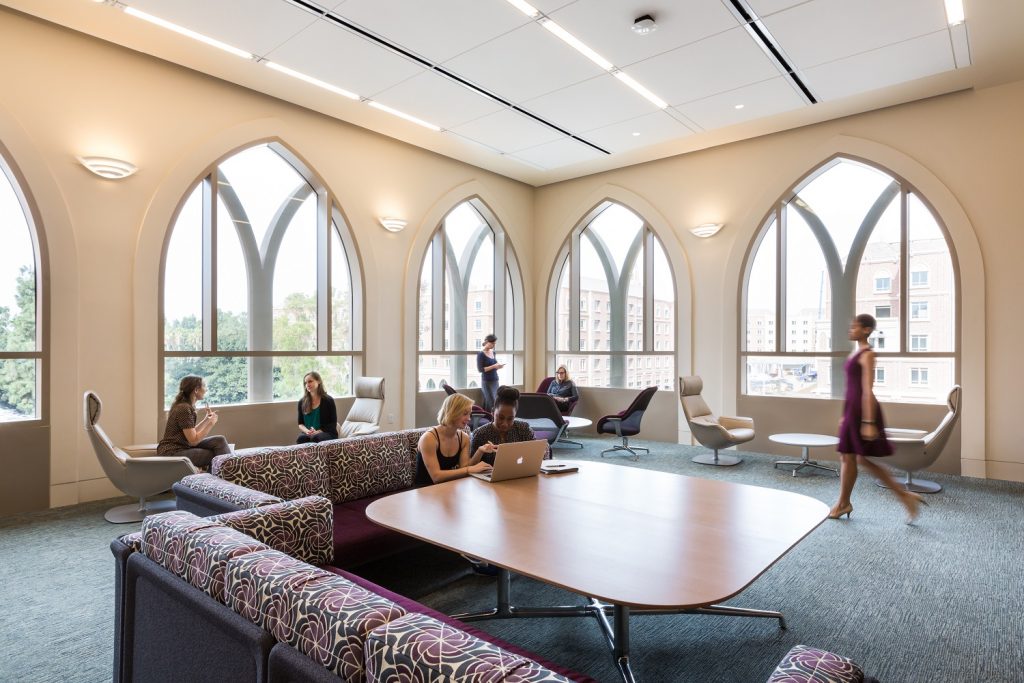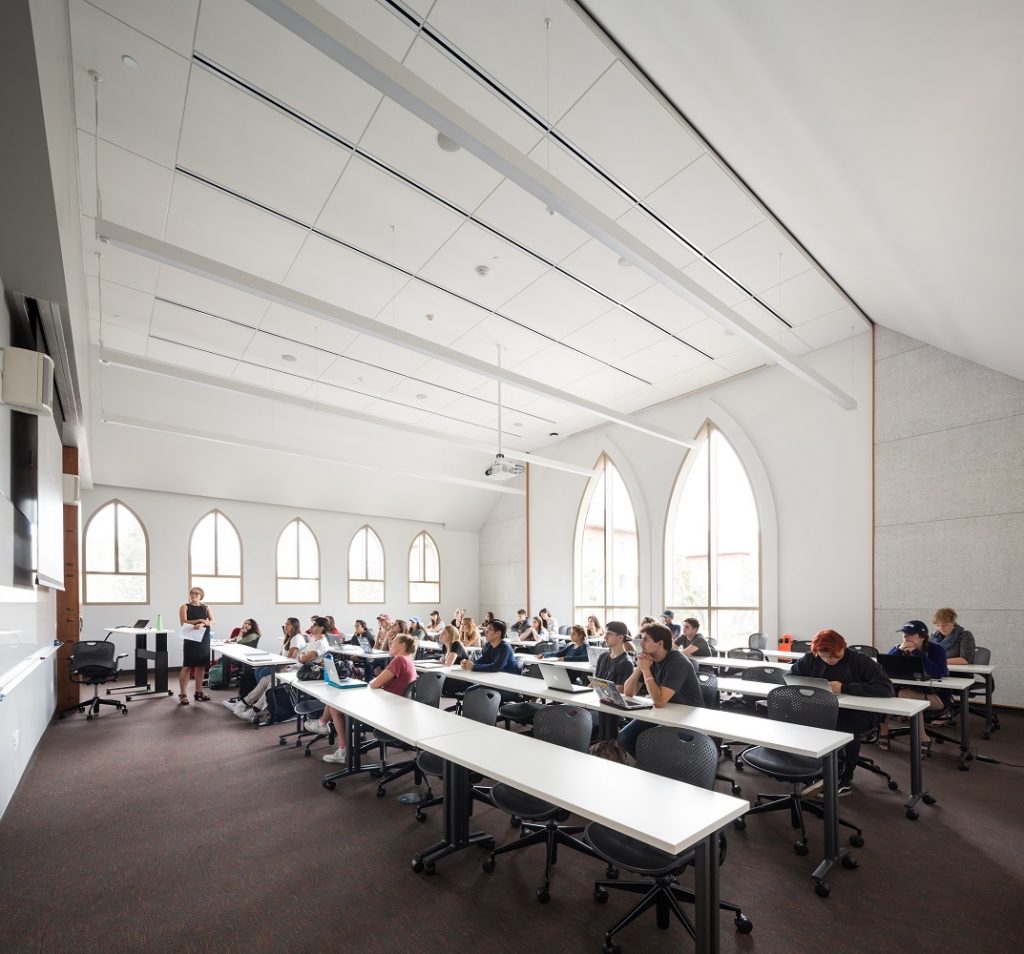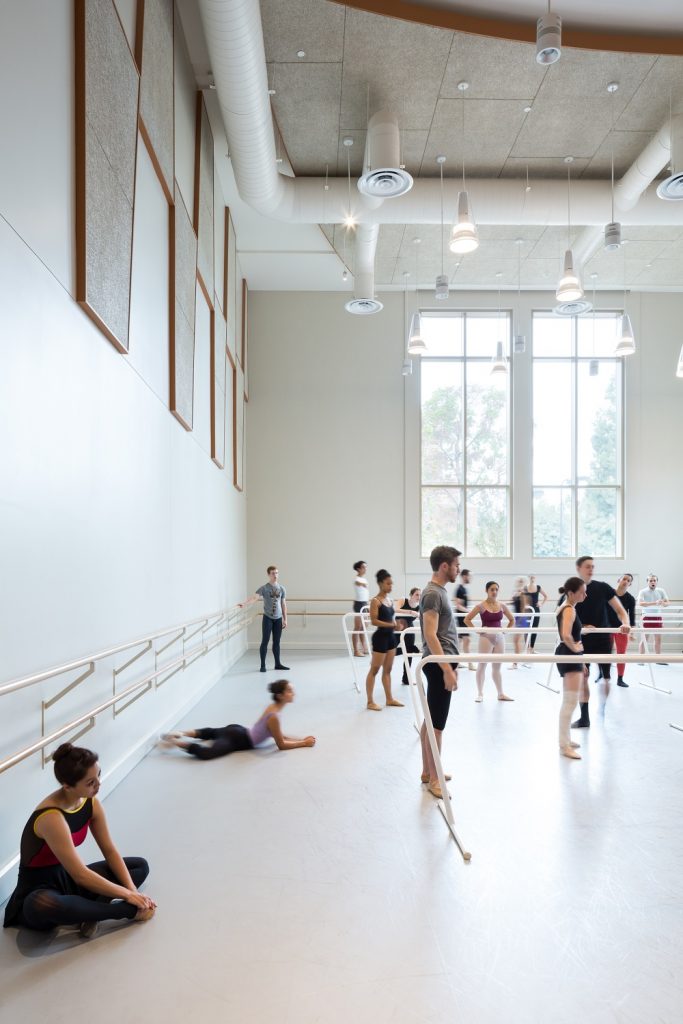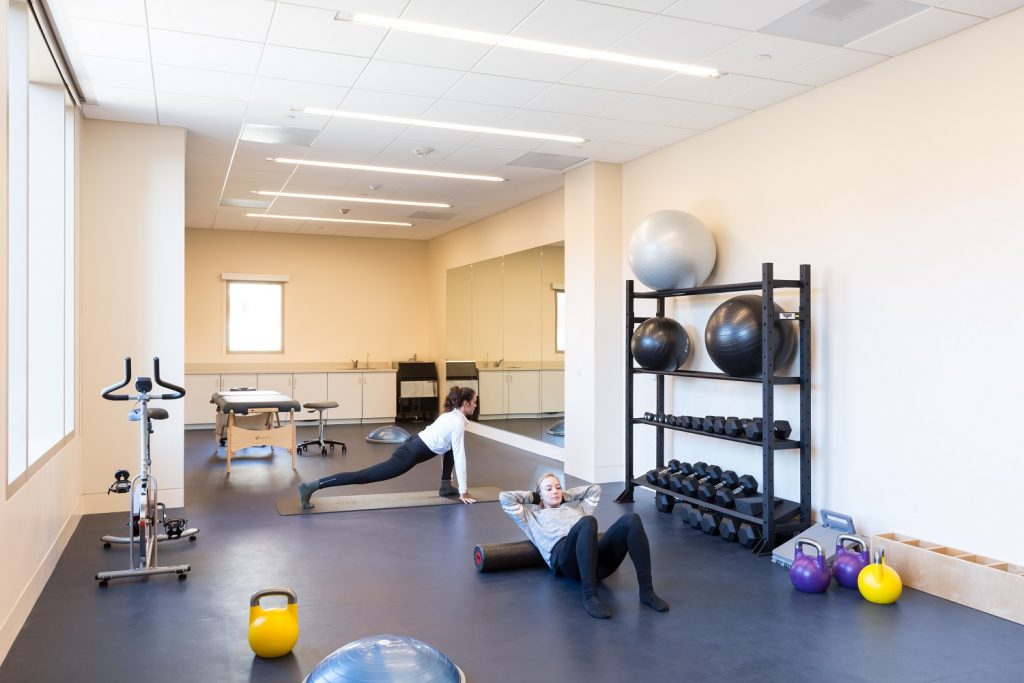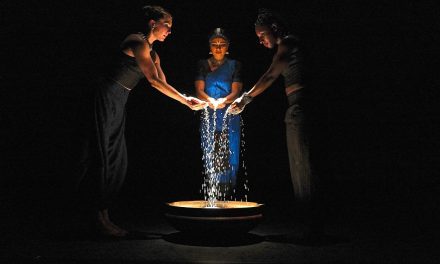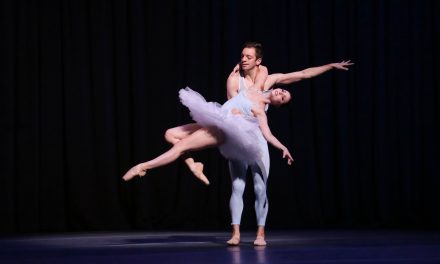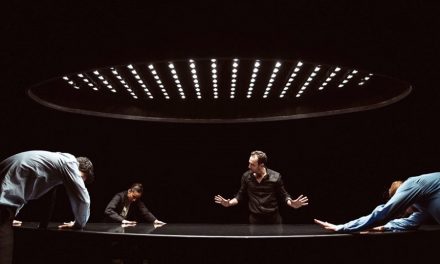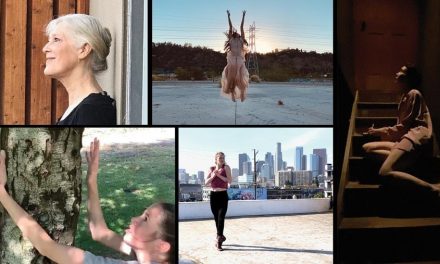Established in 2012, the USC Glorya Kaufman School of Dance became the sixth art school at the University of Southern California (USC) and the first new school to be created at USC in nearly 40 years. In the fall of 2015, the school welcomed 33 students into its first class of Dance majors and on Friday, May 10, 2019 will hold its inaugural graduation ceremony at USC’s University Park Campus with the world renown dancer Mikhail Baryshnikov as the commencement speaker.
Because this was to be the first graduating class, I visited the school for an interview with Associate Professor of Practice Patrick Corbin and BFA in Dance candidate Satori Folkes-Stone, along with the school’s Senior Communications Officer, Cecile Oreste. Readers may recognize Patrick Corbin’s name from his years of performing with the Joffrey Ballet and the Paul Taylor Dance Company.
The groundbreaking ceremony for the school’s new building, the Glorya Kaufman International Dance Center, took place in 2014 but was not completed in time to welcome its first students. So, for the first year, classes were held in a space provided by the USC School of Dramatic Arts.
Prior to our interview, I was given a tour of the spacious and beautiful Dance Center by one of the first graduating BFA candidates, Celine Kiner. You may recognize Ms. Kiner as a member of LA Dance Chronicle’s writing staff.
While we were standing in the building’s main lobby, Ms. Kiner first directed my attention to the fact that there were very few corners or right angles. “Ms. Kaufman wanted the building to reflect movement.” Kiner said. The designer for the Dance Center was Pfeiffer Partners Architects, who were very successful in realizing Ms. Kaufman’s vision. As we stood there, I had a clear sense of the space flowing softly around me.
Ms. Kaufman chose the color scheme, and the interior is rich with bold but graceful mauves, lavenders, and blues. There is blond wood along some of the walls and doors, with soft white along some of the architectural curves. Glorya Kaufman is one of Los Angeles’ most prominent supporters of dance, financially and publicly and can be seen in the audiences of the major touring dance companies as well as local ones. She is definitely one of Dance in L.A.’s most beloved angels.
The Dance Center has six large studios, one of which transforms into a small, black box theater; a fully equipped training/Pilates studio; a student lounge designated solely for BFA students; dressing rooms; academic classrooms, and offices. As someone who lived and worked in New York City for many years, one of the wonderful features is that all the dance studios have large windows that allow the students to enjoy natural light.
Promoted as a school that has “reimagined the professional degree for the 21st century” and “a curriculum that emphasizes hybridity and creates lifelong careers in dance”, my first questions to Mr. Corbin was who on the faculty helped form the school, select the faculty and design its curriculum.
“Before we began recruiting students, Jodie Gates was hired as Vice Dean, Director and Professor,” said Corbin. “She was hired to help with the building design, curriculum design and faculty recruitment. In addition to Jodie, Margo Apostolos and several other faculty members from the School of Dramatic Arts, became the original Kaufman faculty.”
In creating the curriculum, Ms. Gates drew from her experience of teaching at University of California, Irvine. The School of Dance curriculum includes Ballet, Contemporary, Hip-Hop, Afro-Cuban, Gaga Technique, Tap, Jazz, Ballroom, Bollywood, Improvisation and Composition, Choreography for the Screen, Repertory and Performance, International and Historic Perspectives on Dance, Music for Dancers, Conditioning for Dancers, Dance Leadership, Dance for the Camera; and New Media and Editing Technology.
When Jodie Gates spoke with internationally renowned choreographer William Forsythe about becoming part of the school, she asked what the curriculum was missing and what was most needed in teaching dance today. Forsythe, now an artistic advisor and faculty member, responded that they needed to add Hip-Hop, and in fact, Hip-Hop is currently a requirement for the BFA. In addition, dance artists d. Sabela Grimes and E. Moncell Durden are teaching Funkamental Metakinetics, a movement system based on improvisation and Black vernacular dance practices. Other hip-hop faculty members include Tiffany Bong, E. Moncell Durden and Amy O’Neal.
Satori Folkes-Stone went through the Funkamental Metakinetics program, so Corbin asked her to share her experience. “They (Grimes and Durden) have figured out a way to codify the program for the institution.” Folkes-Stone said. “In his first year, Grimes said to Jodie Gates that if the students were going to have Ballet five days a week, then they should have Hip-Hop five days a week.” She went on to explain that after four years Grimes has re-calibrated, stating that much of the Hip-Hop culture cannot exist within the confines of an institution. “He also said that part of our curriculum has to be what happens with Funkamental Metakinetics plus what we do on the outside.” She explained that because Hip-Hop was born in the streets, d. Sabela grimes feels that a hybrid form could be created by students fusing together what they learn in their classes at school with what they learn from the Hip-Hop dancers not taking classes within a school or university.
Corbin explained what sets USC Kaufman apart from other institutions. “We are not just teaching the techniques, but we are teaching the histories that are living within these techniques as we teach them.” He said that the faculty teaches the history and the cultural history behind them as they train the students how to dance them. He also emphasized that the repertory aspect of the curriculum is key to teaching technique and other elements of a style that are taught in the professional dance world. “They are learning the works of these master choreographers, past and present.” Corbin said. “That is a huge part of the curriculum because repertory teaches so much technique already.”
Corbin related how this present generation of young dancers are coming in with more information at their fingertips than ever before. There is Google, social media, and Instagram. “And You Tube!” He said, “There are so many more sources of information available to them than in previous generations that they are coming into the school with many more ways of moving.”
“At our first meeting as freshmen,” Corbin added, “I tell the students that they already know how to move. That they move more incredibly and more uniquely than I have ever seen young dancers move, but we want to help you figure out how and why.” Corbin explained that it is this “how and why” that is at the heart of the program, not just the product.
We talked about how faculty and students working within a dance department, program or conservatory can become very isolated from the professional art scene or other programs on campus. They are, to be honest, simply too busy. When I asked Folkes-Stone if she had worked with any Los Angeles dance companies or choreographers, she said “There is simply no time.” She went on to say that several of the students have begun working with companies in the area, so that there is some overlapping that takes place. She has worked a few jobs in the area with friends and USC alums. Also, faculty member Knight continues to work in the professional world and has occasionally hired a few of the Kaufman dancers.
“But, I frankly wouldn’t have it any other way,” Folkes-Stone added. “because this is what I am here for, and now that my time here is ending, I cherish it even more.”
One thing that surprised me was when I asked how many of the original 33 students were graduating, the answer was one hundred percent. This is rare. Corbin said that the students had completely dedicated themselves to helping shape the program with the faculty and that they were continuously in collaboration with them. “And that wasn’t always an easy space to be in,” he admitted, “but it was very fruitful.”
Folkes-Stone agreed. “It is really so special. I don’t think that we will ever meet anybody else who will say that they were part of building a program.” She is, of course, referring to the students. “And we feel accountable. We’ve held ourselves accountable. It is a very interesting experience to have during the ages of 18 to 22. Especially in college during those formative years.” She told us that a few of the students had joked about how, now that they are graduating, that they wanted to go into a different field where they would be part of creating something just as important, rather than trying to get into an established company.
I asked Folkes-Stone if her goals had changed from when she first transferred from UC Irvine to USC Kaufman. She chuckled and said that she had come full circle. She came into the program thinking that she wanted to be in a contemporary ballet company, but now that she is graduating, she is going back to her first love, Broadway.
Part of the curriculum of any dance program is the study of choreography and performing. USC Kaufman is no different. The graduating class was required to create senior projects which could be performed in any venue or setting of their choosing, on or off campus. They could also choose who they wanted to work with, including students from the School of Music. On April 10, 11 & 12, the students held what was described as “Ted Talks”, where they described what inspired their project, the process of creating, and the experience of performing the work.
“Every department, honestly, especially film,” said Ms. Folkes-Stone when I asked if the students worked with other departments at USC besides music. “Film, Theater, Annenberg. I feel like all of us have been contacted from every walk of life on this campus wanting to do something with dancers since we’ve been here.” Corbin reiterated that point by stating that when he spoke to Dr. Robert Cutiettas about approaching other departments regarding collaborating, Cutiettas said “give it to the students”. He said that it was at the student level where the partnerships would take place.
We discussed how the student dancers keep their creative individuality. “We have some heavy hitters here.” Corbin said. “We don’t want everyone going out into the world doing William Forsythe. We don’t want anyone going out into the world doing some Tayloresque work. It is built into the composition curriculum that the students receive a wide array of choices and options of process.” One thing that may be unique to USC Kaufman is that the freshman class has its own student choreographed concert and freshmen are allowed to perform. Most departments save that for sophomore year and above.
Also at USC Kaufman, they do not separate the students according to levels of ability. The freshman class stays together as a Cohort; moving through the program together. Most dance departments separate students according to their technical level; freshman level, intermediate, advanced, etc. Corbin said that he had his doubts about this working but discovered that it has worked well.
“If we’re going to talk about community building and staying connected to street dance culture,” Ms. Folkes-Stone said. “it’s been everything for us.”
“We are always reassessing and challenging each other.” Corbin said addressing my question about how after four years, were there any changes under consideration by the faculty. He described how the faculty were always having wonderful and difficult discussions. “We look at our Cohort, and we have a truly diverse Cohort, and we want to know what that really means, and honor that. And, the students are part of those conversations too.” Corbin also stated that his approach to teaching has changed and grown so much over the past four years, that if that growth ever stops, it will be time to leave. Ms. Folkes-Stone backed him up by saying that watching the faculty allowing themselves to be vulnerable and/or change, gave them permission to do the same. “To grow into adults — good people”.
“Anyone can teach people how to dance,” Corbin said. “and there are a bunch of good schools.” What he hopes is that USC Kaufman will send people out into the world who are “empathetic, generous, curious, and challenging people”.
We also discussed sending students out into the world knowing that they are far from being a finished product. “I am always starting over. I am not a finished product.” Corbin said.
“And we watch them starting over and not being a finished product.” Ms. Folkes-Stone said.
“The last thing I want from them, “Corbin said. “is to leave this program thinking that this was the highlight of their dancing career. That would be an epic fail. This is the beginning of another time, and life is a series of beginnings.” Wise words.
From talking to Corbin and Ms. Folkes-Stone regarding the school’s curriculum and their open discussions, I came away knowing that these students are in good hands. They are being taught that the world and the dance business is ever-changing, and that the definition of success has also changed. At one time being successful in dance meant getting into one of the big companies of Merce Cunningham, Paul Taylor, Martha Graham, or Bella Lewitzky, for example. Now it is getting paid, paying the bills and being happy at what you are doing. Why should people be poor to be an artist? Why can’t they be middle class. During the students’ first three years at USC Kaufman they offer conversational courses including Colloquium (academic seminar), as well as a Senior Seminar. These courses address subjects that include what is success, what is contemporary dance and what should they expect to find or face in their chosen profession out in the “real world”.
Corbin brought the end of our interview back to the fact that at the USC Kaufman they focus on hybridity. “We are training dancers to not only be hybrid dancers; to be able to transform into any style or technique,” he said, “but also, their thought process, what they are bringing to it visually, and their composition process. That is all part of their hybridity and how they can speak.”
Another course that further assists the students to prepare for post-graduation is Dance Leadership taught by dancer, artistic director, producer, educator, curator, author, lecturer, arts advocate, funder, panelist, and filmmaker Bonnie Oda Homsey.
At the Bing Theatre on April 24 – 26, the school presented the USC Kaufman’s Spring Dance Performance, featuring BFA students performing new and classical dance works by George Balanchine, Alejandro Cerrudo, Bret Easterling, William Forsythe, d. Sabela grimes, Jiří Kylián, Barak Marshall and Crystal Pite. It was an array of choreographers’ work on a single program that is not available to many departments due, in part, to finances. USC is extremely fortunate to have this kind of funding and the Glorya Kaufman School of Dance is making excellent use of that support.
The school also has a summer program, called The New Movement Residency, that opens the facility to professional dance artists to create new or in progress works. For the summer of 2019, all artists are Los Angeles based including founder of TL Collective, Micaela Taylor who has made a name for herself locally and nationally. Marissa Osato and Tony Testa will join Taylor as 2019 New Movement Residency artists.
The Glorya Kaufman School of Dance is a wonderful addition to USC, the wide circuit of dance programs in California colleges and universities, and an important addition to the future development of dancers in the United States. Look for names of USC Kaufman graduates in future dance companies and beyond.
To learn more about the USC Glorya Kaufman School of Dance, click here.
Featured Image: Glorya Kaufman International Dance Center studio – Photo: Ema Peter

